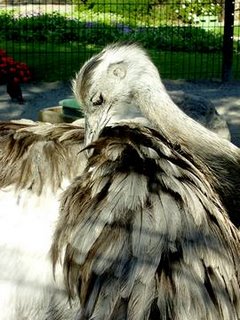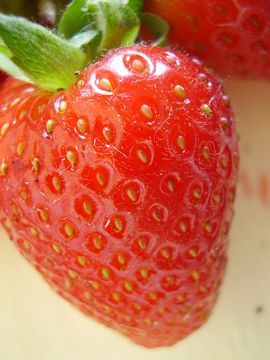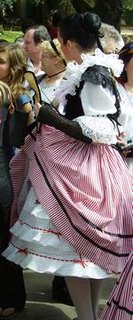Yesterday's Photo Friday swans reminded me i had some other bird photos to post.
I think i hadn't posted them sooner becuase i was in a bit of a quandry about some of them being in captivity. However , then I read the 2006
red list about newly endangered and at risk species and thought thats since these are being partly kept for increasing the gene pool for wild animals and are mainly captive reared that probably was a good thing.
This is a
grey crowned crane Balearica regulorum -an African bird that is a quite primitive crane which can still nest in trees.
They have
CITES II status which means that although they aren't yet threatened with extinction , they may become so if trade is not strictly regulated.

This bird is a Rhea [
Rhea americanus] or nandu /nandoo -a large flightless bird from South America.
Rheas are omnivorus birds [eating insects, seeds, fruits, lizards small animals] and they can reach 30kilos in weight.
Like ostriches, they are fast runners, reaching speeds of 50km/hr.
They can live in diverse habitats but they are still coming under pressure as more and more land is used for human activities.
They are also CITES listed as threatened species- they are frequently killed by farmers since they will eat crops -but they are also hunted for food and feathers.

They were quite impressive birds- and it was really interesting to see their ears and eyelashes -which looked as if the hairs were there to prevent dust and sand entering.
 Ara macao,
Ara macao, scarlet macaws, are very large parrots which used to range from eastern mexico to the Amazon forest. They are also suffereing from habitat destruction and also from being hunted to be kept as pets, however since they are considered 'common' in some parts of their range [thoyugh declining in others] they are not yet considered threatened.
They are intelligent birds and can use tools . In fact several of these birds showed this while we were there as they used the aviary structure to break the shells on nuts and seeds.
They have fabulous colourful plumage, long tails and large hooked beaks that are used to crush seeds.
Here is one sleeping

Macaws are very strongly pair bonded [so faithful they stay together till death] . They spend a lot of time grooming each others feathers and snuggling together.

A macaw climbing to break seeds against the wire- they have amazing feet , quite different from the fan shape of other birds.

A white peacock and an 'ordinary' indian peacock. Unfortunatley the sun was going down when the birds decided to pose together.
The white peacocks are apparently not albinos- they are a mutation from the normal irridescent green and blue

White Pelicans
Pelecanus onocrotalus were swimming freely on the large ponds and streams that ran through Parc Phoenix. They are native to southern Europe [and Asia] and present, though fairly rare, in Southern France.
I've seen them in Greece several times. , usually hanging around ports waiting for fishermen to come back and throw them scraps.
They are quite big birds
Their huge beaks are quite impressive -they use the pouch under the beak like a net to catch fish
For some reason they strongly remind me of pterodactyls -especially when flying.

Pelican fishing =- there were lots of large carp and koi in the water but i think the pelicans were fishing for smaller fish.


Technorati Tags:
photosrheacrowned grey cranepelicanred macawparrotpeacocksnandou









































